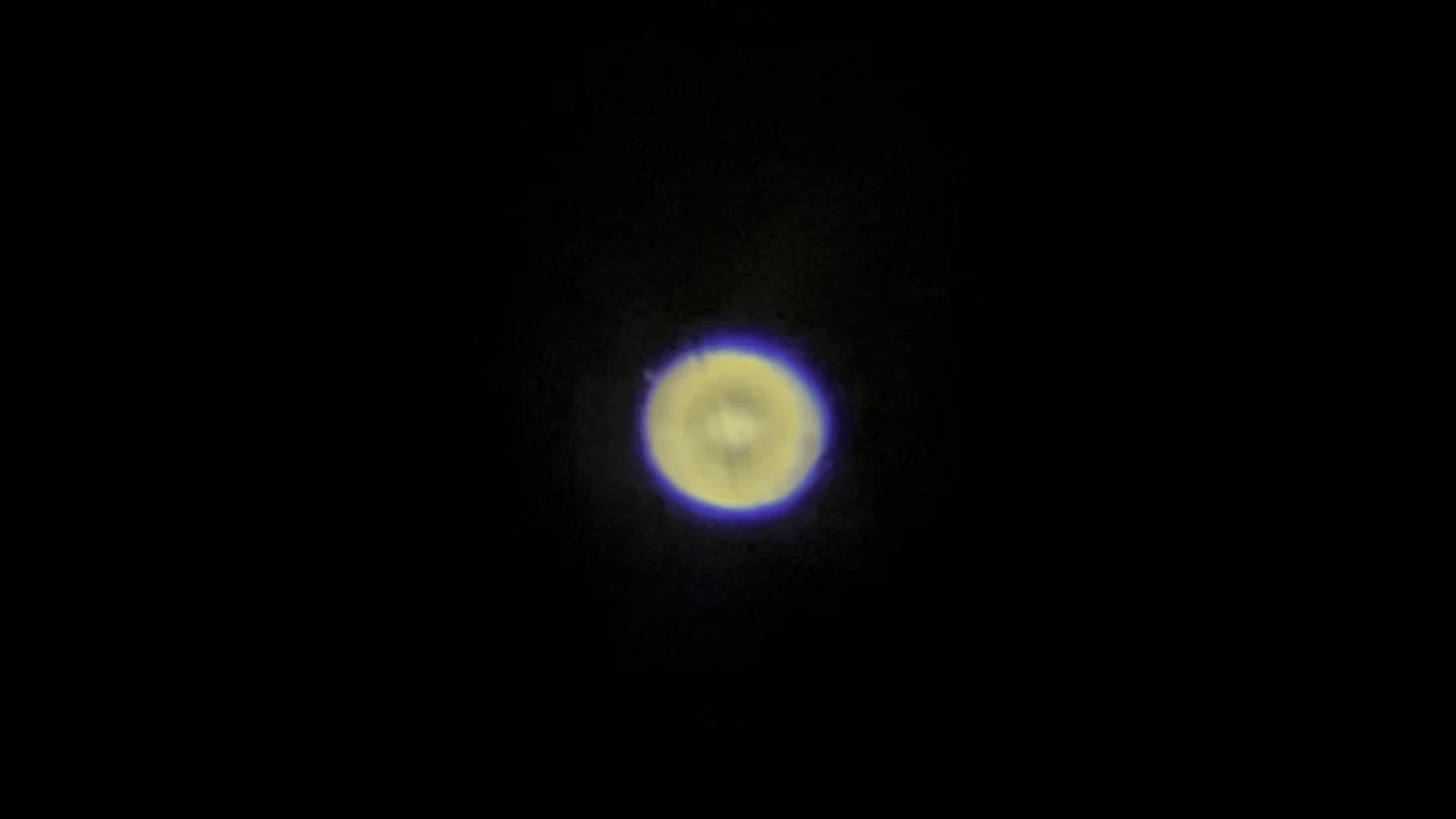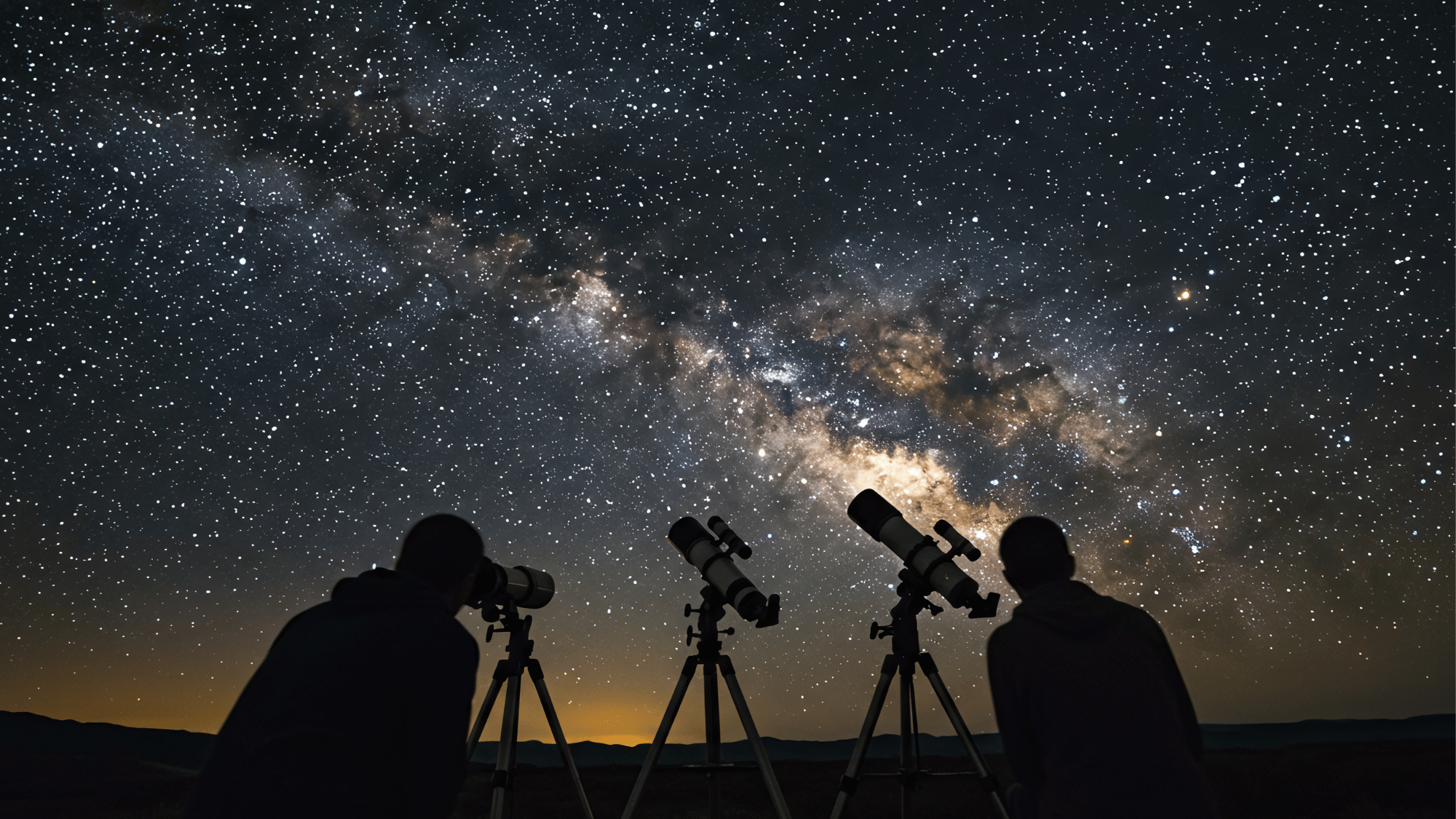Curious about what you will actually see when you point a telescope at the night sky? Many people expect stars through telescope views to show colorful, detailed close-ups like photos from space agencies.
The reality differs significantly from the processed images you regularly see online or in magazines.
Stars appear as bright points of light rather than large spheres with visible surfaces through most amateur telescopes.
Knowing what to expect can prevent disappointment during your first stargazing sessions. Telescope views can still amaze you by revealing colors, binary systems, and countless faint stars invisible to the naked eye.
How Stars Really Appear Through a Telescope
Stars remain point sources of light even through powerful telescopes because of their immense distances from Earth.
You won’t see surface details, spots, or texture like you might observe on the moon or planets. Stars through a telescope appear as sharp, focused dots that may show subtle color tints ranging from blue to orange.
Brighter stars display more noticeable colors, including blue-white, yellow, orange, or red, depending on their temperature.
The main difference from naked-eye viewing is brightness and the ability to see thousands more faint stars.
The twinkling effect you see with your naked eyes disappears through telescopes, replaced by steady, unwavering points of light.
Why Telescopes Show Stars as Tiny Points, Not Disks?
The reason is related to the basic physics of light and angular resolution limits.
When light from distant stars enters a telescope, diffraction patterns form around the focused point, creating small disks. These diffraction disks are incredibly tiny, typically measuring just a few arc-seconds across at most.
The human eye cannot distinguish details smaller than a certain angular size, keeping stars as points.
Telescope aperture determines resolution limits, but even giant instruments cannot make stars appear larger than points.
The immense gulf between Earth and even nearby stars means their actual size translates to unresolvable angles.
Advanced imaging techniques and space telescopes reveal slightly more detail, but backyard telescopes show crisp, sharp points.
Factors that Affect How Stars Appear Through a Telescope


Image Source: Reddit
Understanding the factors influencing stellar visibility helps you achieve sharper, clearer star observations and maximize your telescope’s performance under any conditions.
1. Atmospheric Turbulence and Seeing Conditions
Atmospheric turbulence, known as seeing, dramatically impacts star clarity through your telescope.
Air currents at different temperatures create distortions that cause stars to twinkle and blur, especially at higher magnifications.
Stable atmospheric conditions produce steady, sharp star images, while turbulent nights create dancing, unfocused points of light.
Observing on calm nights with minimal wind and after temperature stabilization yields the best stellar views.
2. Light Pollution from Urban Areas
Artificial lighting from cities severely degrades star visibility by creating sky glow that overwhelms faint stellar light.
Urban observers see only the brightest stars, while dark-sky locations reveal thousands more.
Light pollution reduces contrast between stars and the background sky, making dimmer objects invisible even through powerful telescopes.
Driving just 30-50 miles from city centers can dramatically improve your view.
3. Telescope Aperture Size
Aperture diameter determines your telescope’s light-gathering power and resolving ability for stars.
Larger apertures collect more photons, revealing fainter stars and resolving close binary star systems that smaller instruments show as single points.
A 150mm telescope reveals stars several magnitudes dimmer than a 70mm model. Larger apertures also magnify atmospheric turbulence effects.
4. Optical Quality and Lens Coatings
Superior optical quality ensures stars appear as sharp, focused points rather than fuzzy blobs with halos.
High-grade lenses and mirrors with precise surface accuracy deliver crisp, stellar images with minimal aberrations.
Multi-coated optics maximize light transmission, presenting brighter stars with better contrast against the dark background.
Inferior optics scatter light, creating unwanted glare around bright stars and reducing overall image sharpness.
5. Magnification Power and Exit Pupil
Magnification affects star appearance differently from extended objects like planets or galaxies.
Stars remain point sources regardless of magnification, but higher powers darken the background sky, improving contrast and revealing fainter companions.
Excessive magnification amplifies atmospheric turbulence and mount vibrations, degrading image quality.
The exit pupil aperture divided by magnification should match your eye’s dark-adapted pupil size of approximately 7mm for optimal brightness.
6. Temperature and Thermal Equilibrium
Temperature differences between your telescope and the surrounding air create internal air currents that significantly distort starlight.
Telescopes require 30-60 minutes to reach thermal equilibrium with outdoor temperatures before delivering optimal performance. Warm optical surfaces create heat plumes that cause stars to shimmer and blur unpredictably.
Reflector telescopes are particularly sensitive to thermal issues, while refractors stabilize more quickly.
What you can See Beyond Single Stars


Image Source: Reddit
Telescopes reveal numerous celestial objects beyond individual stars that the naked eye cannot detect under normal conditions.
Star clusters containing dozens to thousands of stars packed together create stunning views through modest telescopes. Nebulae appear as fuzzy patches or clouds where new stars form from gas and dust.
Binary star systems show two or more stars orbiting each other, often displaying contrasting colors.
Galaxies beyond our Milky Way appear as faint smudges containing billions of stars compressed into small areas.
Stars through telescope observations also reveal variable stars that change brightness over time when monitored carefully.
Tips for Stars Astrography Through a Telescope
Following these proven techniques helps you maximize your telescope’s performance and capture stunning astrophotography of stars during every imaging session.
- Dark location: Choose observing sites away from city lights where the sky appears genuinely black overhead, minimizing light pollution in your images.
- Polar alignment: Precisely align your equatorial mount to the celestial pole for accurate tracking during long exposures.
- Start with short exposures: Begin with shorter exposure times to test focus and tracking before attempting longer integration periods.
- Stable mount: Use sturdy equatorial mounts with accurate tracking to prevent star trails and maintain sharp pinpoint stars.
- Avoid moonlight: Image during new moon phases when lunar brightness doesn’t wash out faint stars and reduce contrast.
- Check collimation: Ensure telescope optics are properly aligned for sharp, round star points across the entire frame every session.
Best Telescopes for Watching Stars


Image Source: Reddit
Here are the top telescopes that combine exceptional optical performance, ease of use, and value for unforgettable stargazing experiences tonight.
| Telescope Model | Magnification | Build Quality | Lens Coating |
|---|---|---|---|
| Celestron NexStar 8SE | 50x-480x (with accessories) | Excellent – Sturdy computerized mount with aluminum optical tube | StarBright XLT multi-coated optics |
| Orion SkyQuest XT8 | 48x-300x (with included eyepieces) | Very Good – Solid Dobsonian base with steel bearings | Fully multi-coated optics |
| Sky-Watcher ProED 80mm | 16x-160x (with standard eyepieces) | Excellent – Premium apochromatic refractor, dual-speed focuser | Fully multi-coated ED glass |
| Meade Instruments Polaris 130mm | 26x-195x (with included accessories) | Good – Stable equatorial mount with aluminum tripod | Multi-coated optics |
| Celestron AstroMaster 130EQ | 33x-307x (with accessories) | Good – German equatorial mount with adjustable tripod | Multi-coated optics |
| Apertura AD8 Dobsonian | 56x-360x (with included eyepieces) | Excellent – Premium Dobsonian base with dual-speed Crayford focuser | Fully multi-coated premium optics |
Conclusion
Understanding how stars appear through a telescope helps set realistic expectations for your stargazing experience under dark skies.
Stars remain points of light rather than detailed spheres, but telescopes reveal their colors and countless invisible companions.
Telescopes open views of clusters, nebulae, galaxies, and binary systems invisible to the unaided eye. Following proper viewing techniques maximizes your experience and helps you see fainter objects more clearly.
Grab a telescope tonight and see how many more stars you can count compared to naked-eye views.


















